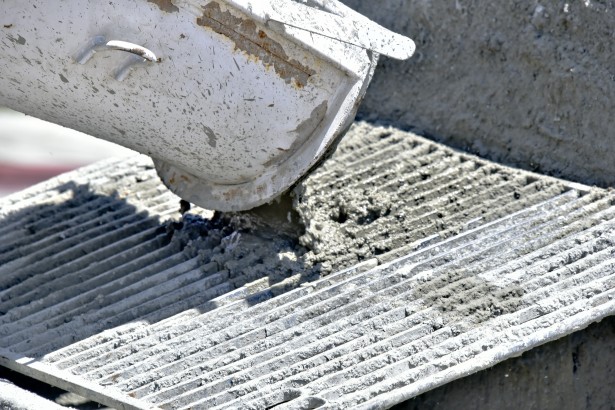BLOG
Concrete Pouring Done Right
by TRP Ready Mix on November 11, 2019

Research, Plan and Prepare for Optimal Results
Concrete pouring may seem simple and straightforward, but a project can go sideways very quickly if you are not careful. Preparation, planning and hiring professionals can be key factors in ensuring a successful outcome. All too often, simple mistakes can lead to catastrophic outcomes. Especially when it comes to permanent material. In this article, we break down the top mistakes and provide you with the tools to ensure you get the job done right the first time.
Improper Reinforcement
Reinforcing the structure that you are pouring concrete into is a key component for a successful job. Concrete lacks tensile strength, despite its durability. It is vulnerable to cracking where water does not drain well. Glass, metal, plastic fibre and rebar are all great reinforcement options. These materials can hold the concrete together in the event that it begins to crack. It significantly improves the strength of your surface.
Improper Steel Mesh Placement
Concrete is very strong, pliable and durable, however, reinforcing it will offer additional support and ensure that it lasts much longer. Steel mesh, unlike rebar, can be formed very easily. It is a popular material to use when reinforcing concrete. When installing steel mesh, it is important to correctly measure the surface. Different surfaces would also require different measurements and calculations.
Read More: The Problem with Steel-Reinforced Concrete
Not enough curing time
Curing is an extremely important part of any concrete pouring project. It ensures proper strength development and durability. It requires the right balance of moisture for continued hydration, volume stability, resistance to freezing, thawing, abrasion and scaling.
Read More: How To Cure Concrete Faster
The length of time in which curing times are established is dependent on multiple factors, such as:
- Weather Conditions
- Strength
- Mixture proportions
- Size/shape of the concrete member
- Exposure to conditions in the future
Read More: Curing and Pouring Concrete: Best Practices for Summer
Failing to Equip Yourself with the Proper Tools
Proper tools are an essential part of any project, however, it is imperative to have the right tools when pouring concrete. They can mean the difference between success and disaster. Most of the tools required are basic, however, some specialty equipment is worth the investment or rental depending on how often you plan on pouring concrete.
Ensure you have the following before you get started:
Land Grading Equipment
This allows you to create a gentle slope which can carry rainwater away from the concrete slab, ensuring that water does not build up and soften or degrade the soil, causing cracks. Grading equipment can be rented. Alternatively, you could hire a professional to handle this piece of your project.
Soil Compaction Equipment
It is important to ensure soil is properly compacted prior to pouring the concrete as this can prevent cracks from forming. This equipment can be rented from your local home renovation store or hire a professional to take care of it for you!
Compaction Vibrators
This ensures a smooth concrete surface and optimizes density and strength and can be rented or managed by a hired professional.
Concrete Forms
Forms will ensure that your pour stays within the boundaries that you have set so that it will dry to your selected shape and size. Forms are typically made of wood and must be installed properly. Improper installation can cause the concrete to leak and bowing of the wood.
Rebar
Concrete can crack over time. Installing rebar, which is usually made of stainless steel and comes in rods or mesh sheets, can help reinforce concrete and minimize cracking in the future.
Improper Planning
Planning and preparation are essential components to completing a successful project. Make a list of the items you will need, including raw materials, tools, equipment and safety gear. You can then budget and research the best prices online. Obtain estimates. There are multiple variables to consider and if costs are coming in over budget, there are ways to adjust when calculating the total of your concrete project.
Read More: Concrete Project Planning Basics You Need to Know
Pouring in Poor Weather Conditions
Few people consider the weather when preparing for a concrete project. This one factor can have a significant impact on the success of your project. Temperatures, whether hot, cold or wet, must be considered. Ensure you protect the fresh surface from the rain for 2-4 hours after mixing.
Read More: When is it Too Cold to Pour Concrete?
It’s All in the Details
As you can see, it is not as easy as mixing and pouring. There are far more details to consider when pouring concrete. Ask for help. Obtaining all the necessary details will save you a whole lot of trouble if done right. Hiring a professional concrete contractor can provide peace of mind, knowing that the job will be done right, and your investment will be sound.
TRP Ready Mix is a leading concrete contactor and supplier with plans in the Ottawa region, with the scale and scope needed for large provincial/federal concrete projects. The team of professionals is also ready to tackle smaller-scale work. No project is too big or too small for this team.
